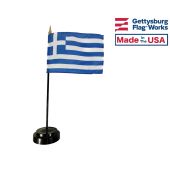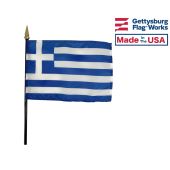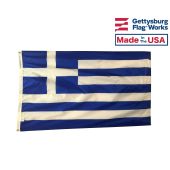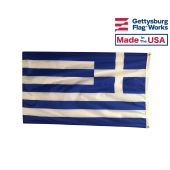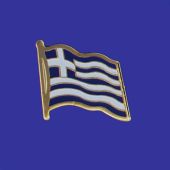Buy Greece Flags
Flag of Greece
Greece is often called the birthplace of western civilization, but the modern nation is quite young. There was no Greece flag for the majority of the ancient period, but the modern flag does include several links to the symbols of Ancient Greece.
- Capital of Greece: Athens
- Area of Greece: 130,800 sq. km
- Languages used in Greece: Greek (official), English, French
- Religions in Greece: Greek Orthodox, Muslim
Colors and Symbolism of the Greece Flag
The flag of Greece consists of nine horizontal stripes that alternate between blue and white. The flag displays a white cross on a blue field in the flag's canton. Those colors were chosen to emphasize the link between the modern nation and the legacy of the classical Greeks. Blue and white patterns were often used in religious displays in Athens and the rest of the ancient cities in Greece, and they were also common on the war banners of Alexander the Great and the Byzantine emperors.
History of the Flag of Greece
Greek history stretches back for thousands of years, but the history of the Greece flag is much shorter. Classical Greece was divided among many independent cities that often fought with each other, and that lack of unity prevented any single flag from representing the entirety of the Greek world. The cities remained relatively independent ever after the Macedonian conquest of Greece, so no banner or flag can truly be said to represent the Greek people until the late Roman period.
Greece eventually became part of the Roman Empire, and that empire eventually split into two independent states. The Eastern Roman Empire, also known as the Byzantine Empire, became the medieval kingdom of the Greek people. The Byzantine Emperors represented their nation with a flag of red and gold, but many military units used flags of blue and white on the battlefield. Those war banners were a precursor to the modern design.
Byzantine rule eventually gave way to the Ottoman Empire. The Ottoman Empire had to deal with frequent rebellions in Greece, and the blue and white flag originated among the rebel forces. The design varied widely between revolutionary groups, but many of them featured blue and white colors with decorative crosses.
Greece became independent from the Ottoman Empire in 1829 after the end of a revolutionary war that began in 1821. The revolutionaries decided to represent themselves with a blue and white flag with a cross in 1822, although the original flag used a lighter shade of blue and did not feature any stripes. The modern flag of Greece came into use in 1969.
